|
Safety riding boots
explained by Nico Katan.
As the manufacturer
of Equitector safety riding boots, I am frequently questioned by fellow
riders about the safety aspects of steel toe capped riding boots and when
I ask their about their opinion, their first reaction mostly is;
" Oh no, I have heard so many rumours about accidents with that type
of boot. They chop your toes off". Unfortunately there is truth in
these rumours.
Few footwear designers
are involved in equestrian activities and therefore are unlikely to familiar
with the type of exposure to risk we riders are likely to encounter.
Under safety legislation
all safety footwear including steel toe capped riding boots must be CE
marked and licensed. In order to achieve such status boots need to pass
about 30 rigorous tests. But most riding boot manufacturers who produced
safety products in the past, are unfamiliar with safety matters and did
not feel the need for compliance with the regulations. For that reason
several safety riding boots which were substandard by design, entered
the market.
Most designers felt,
incorrectly so, that by simply inserting a steel toe cap in their conventional
riding boot was sufficient to give the rider adequate foot protection.
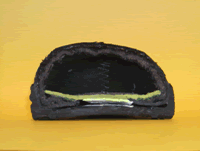
Protective toe cap compartment.
For example if an
accident occurs on firm ground, it will be the floor that supports the
toecap. When a person is accidentally trodden on, the steel toecap will
take the impact firstly. This cap is strong enough to withstand weights
of at least a 1000 kilo, which in excess of the weight of any horse. Thereafter
the bottom edge of the cap will compress the sole itself due to the pressure
from above after which, it is the concrete floor that will withstand the
remainder of the impact.
No problem so far. The boot has done its job and the foot has been protected.
However on soft ground
such as a field, manage, deep litter bed etc, it is another matter altogether.
If the sole construction
is insufficient in strength and rigidity, the edge of the steel toecap
will under weight of the impact, press through the sole into the ground.
The inner sole will be lifted towards the ceiling of the steel toecap
taking your foot with it.
As a consequence your toes will be squashed against the ceiling inside
the steel toecap.
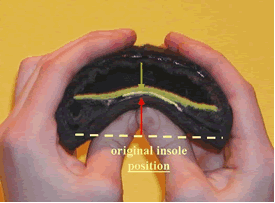
toe compartment of an substandard product |
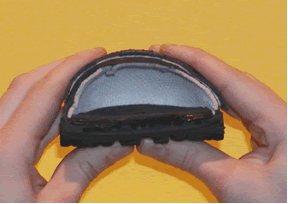
toe compartment of Equitector |
As demonstrated in
the left picture, merely the pressure of your thumbs is sufficient to
reduce the internal height of the protective toe compartment by more than
50 %.
One shudders to think what would happen during an encounter with a weighty
horse.
It is for that reason
that in the past so many accidents have taken place with safety riding
boots. In comparison, the Equitector product (right picture) has been
designed to withstand this type of accident and their products have enjoyed
a 10 year unblemished safety record.
Fortunately most substandard
products are now no longer available on the market but just to be sure
that you are purchasing an up to standard and safe product, it is important
that you check that the product is CE marked and that the boot itself
is marked with the safety standard BS EN345 or BS EN346.
Only products with these markings have been independently tested and therefore
can be relied upon to be safe.
Product descriptions
in mail order catalogues or websites or on the shoe box it self, making
claims that the product meets European legislation or that the toecap
passes EN344 and any other variations, with regret, cannot be relied upon.
Properly designed
and CE marked safety riding boots will give riders sufficient foot protection
and there is every reason for consumers to have confidence in such a products.
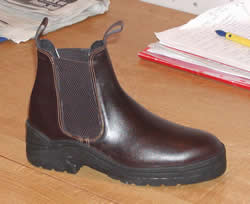 the Field
Master Jodhpur Boot
the Field
Master Jodhpur Boot
|
 the Prairie
Master
the Prairie
Master |
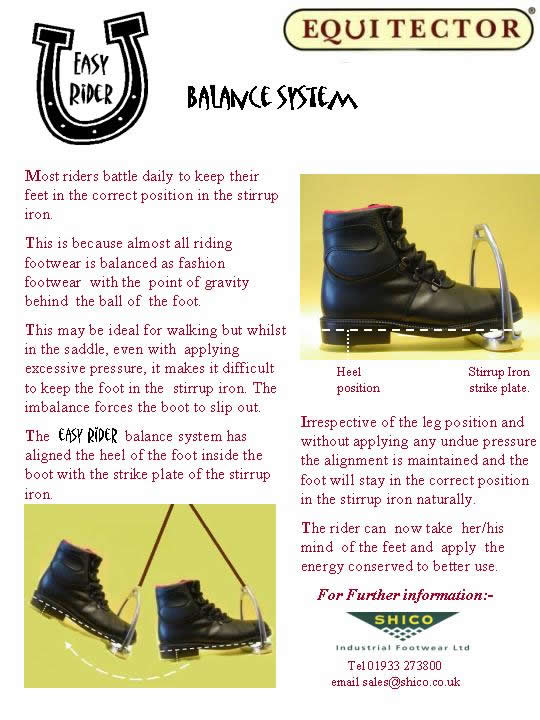
|

